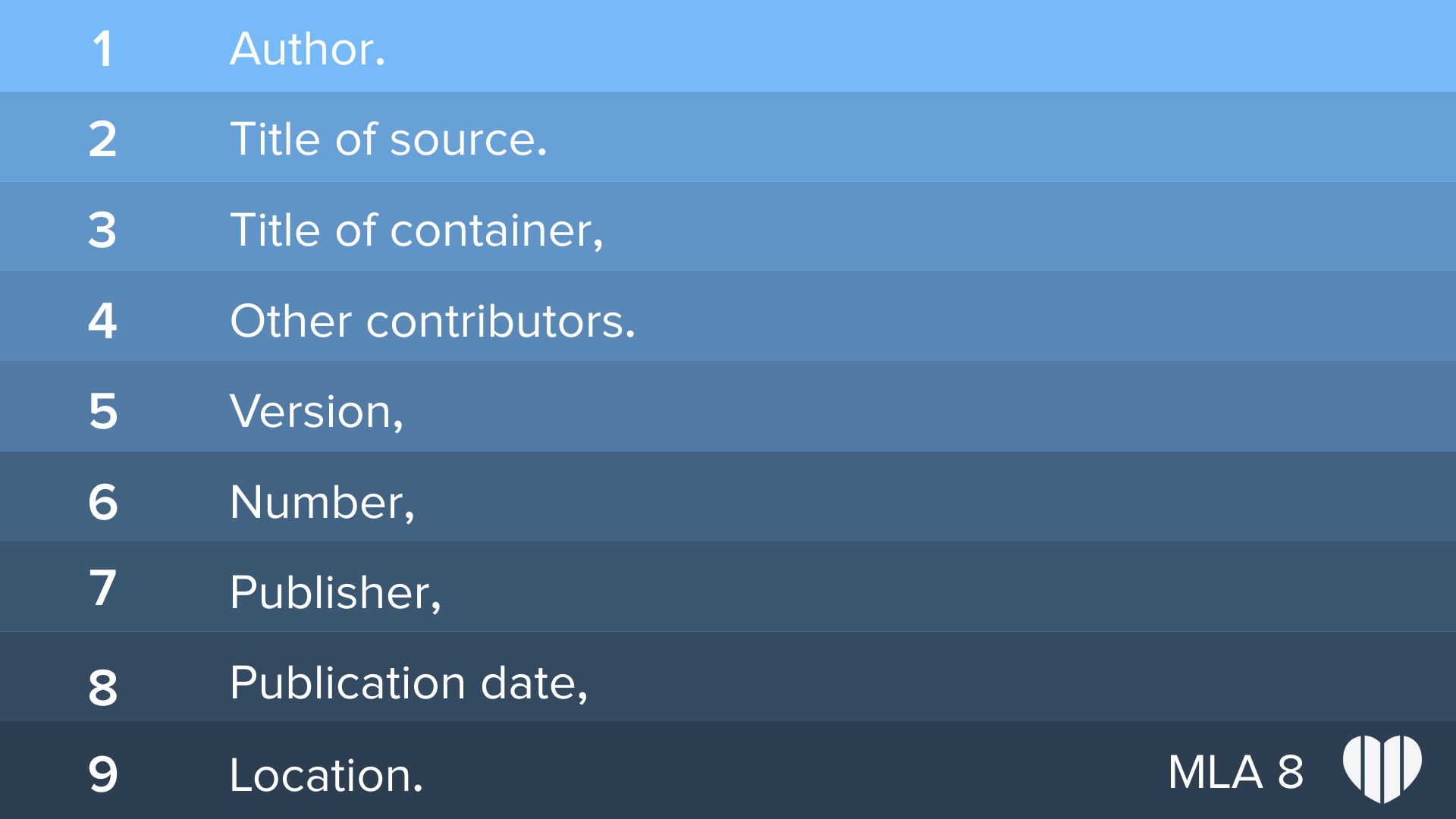The shiny new edition of the MLA Handbook came out earlier this year and we were obviously one of the first to get our hands on it. Yes, we’re that serious about referencing. So, what’s new and important for students, researchers and educators to know? What are the big changes between MLA 7 and MLA 8? We explain this and so much more about why we think you should embrace this new edition!
One size fits all
The biggest difference between MLA 7 and MLA 8 is the new standardized citation format. In previous editions, different types of source had to be referenced in specific ways, which wasn’t just hard for students to do correctly, it was also really hard to encode into our style. For instance, a book reference had to include the book’s publisher and edition, whereas a journal article required the name of the journal and the volume and issue numbers. Previously, researchers had to find the relevant section of the guide (which was a book thick enough that it could double as a tool to press your favorite flowers or as a stoop to get to the top of your closet) to know how to cite a certain source correctly. Now there is a universal template which allows students, educators, researchers etc. to reference any source, from tweets to comic books, in exactly the same way.

Of course there are still some differences between the various types of sources, some information is more relevant than others, but now, whatever the source, your reference will be able to fit this template. Take a regular book for example – if you want to reference the 2nd edition of a book that information goes under “Version”, if it’s the 3rd volume of a series, that’s “Number”, if you want to mention that this book has a translator, that’s “Other contributors”.
The fields are very flexible and are catching up with our modern and digitized world. Need to reference a TV series? A painting at a museum? No problem! “Title of container” is what they use to denote an independent publication of any medium, it could be the name of a newspaper, the name of an anthology or the name of a television series. “Location” could be page numbers, a web address or a museum. What’s more, it can be customized. Suppose you are writing an essay on a prominent translator of books, normally a book’s translator would go under the “Other contributors” field but in this case it would be acceptable to put them in the “Author” field and add the book’s primary author to the “Other contributors” section.
Containers
The next major change to MLA is the containers. Although containers were present in MLA 7 the way they’re used has been expanded and streamlined. In the template, fields 3 through 9 cover the source’s container. If a source has more than one container, such as a chapter in a book in an anthology or an episode of a tv series shown on an online streaming service, then this section is repeated for each additional container.
Other exCiting changes
These are the two main changes to MLA format in the eighth edition but there are a number of other small changes. Here are a few of them:
- URLs are now supported, in a world of hyperlinks, we at Cite This For Me think this is the way to go.
- Pseudonyms and usernames are now allowed, because who uses their real name on social media?
- Terms, such as editor and translator, are no longer abbreviated, because why would you?
- Et al is now used when there are three or more authors instead of four.
- Volume, issue and page numbers now have the prefixes “vol.”, “no.” and “p.” or “pp.”.
- The city of publication (or any other publication location information) is no longer required.
- The medium of publication is no longer required, we’re glad to hear this!
The best thing about the new MLA 8 is not in the nitty-gritty details, but the fact that we are seeing a shift in academia away from the mechanics of citations to the quality of research. Instead of demonizing online sources, we are starting to celebrate the breadth of information and formats that have become an integral part of our education. Welcome to the 21st century, MLA 8!
There are hundreds of citation styles including APA format, Harvard referencing, and more on Cite This For Me. Try it out today!